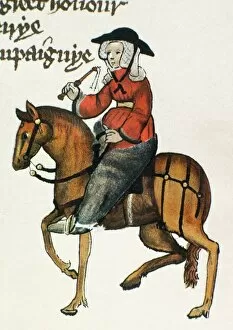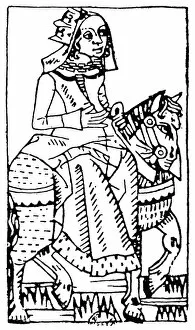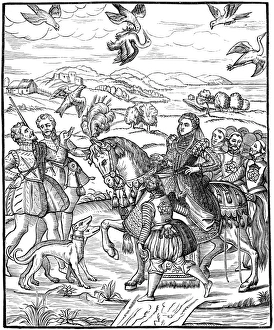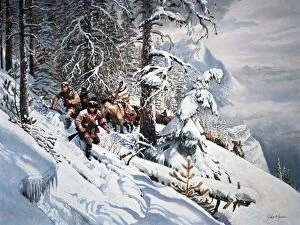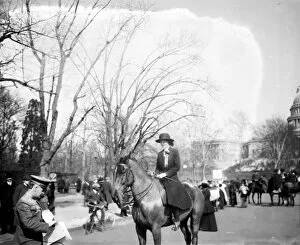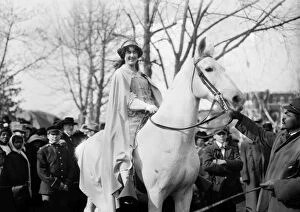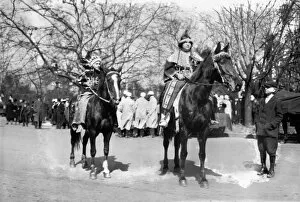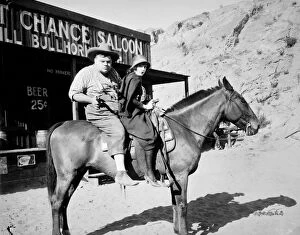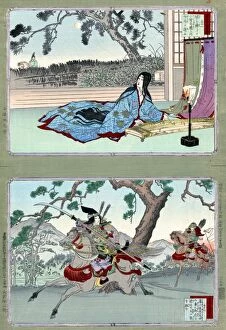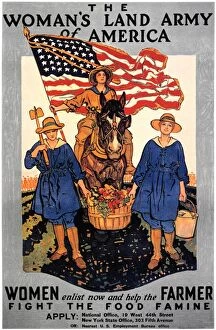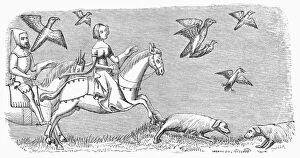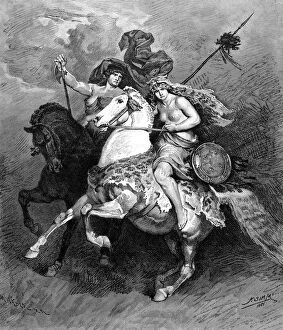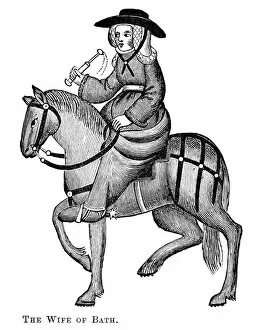Horsewoman Collection (page 5)
"The Horsewoman: A Timeless Symbol of Strength, Beauty, and Freedom" Throughout history, the image of the horsewoman has captivated hearts and minds
All Professionally Made to Order for Quick Shipping
"The Horsewoman: A Timeless Symbol of Strength, Beauty, and Freedom" Throughout history, the image of the horsewoman has captivated hearts and minds. From Chaucer's Canterbury Tales to circus posters in the 1920s, this figure has represented a unique blend of grace and power. In medieval times, Lady Godiva emerged as an iconic equestrienne. As a gentlewoman and patron of the arts, she fearlessly rode through Coventry to protest against oppressive taxes. Jules LeFebvre's lithograph beautifully captures her courage and determination. The art world also celebrated the horsewoman's allure. Karl Bryullov's painting showcases her elegance as she confidently sits atop her steed, embodying both strength and femininity. Moving into the 20th century, cowgirls like Josie Sedgwick showcased their skills with lariats. Their daring performances demonstrated that women could excel in traditionally male-dominated arenas. Even renowned artists like Toulouse-Lautrec immortalized Papa Chrysantheme at the New Circus – a testament to how these riders captured imaginations far beyond just entertainment value. Silhouettes depicting hunting scenes further emphasize their connection with nature and adventure. The horsewoman becomes one with her mount as they navigate challenging terrains together. Ada Castello graced American circus posters in 1899, captivating audiences with her fearless spirit on display for all to see. Her presence symbolized empowerment for women during a time when societal norms were shifting rapidly. Not limited to historical figures or performers alone, even high society embraced this timeless archetype. The Countess of Dudley exuded sophistication on Tatler magazine's front cover while wearing an elegant riding habit – epitomizing class alongside horsemanship. From oil paintings capturing moments frozen in time to candid photographs showcasing everyday riders from different eras such as 1928 or Frank Craig’s "The Maid, " each portrayal highlights not only the horsewoman's physical prowess but also her spirit and independence.






